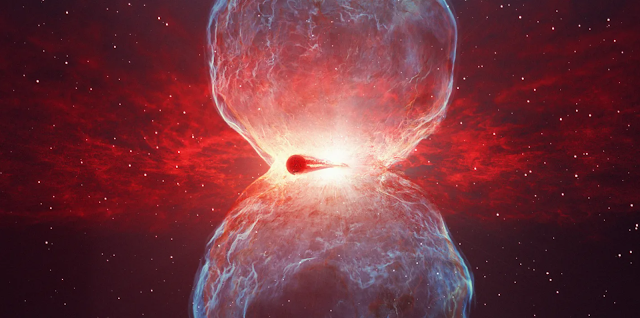The nova may reveal how star explosions spawn the solar system and universe.
In an intermediate polar system, companion star mass flows into a white dwarf’s accretion disk. The white dwarf’s magnetic field disturbs this material, creating light variations.
A faraway cosmic object erupted on June 12, 2021. The typically invisible white dwarf peaked out at magnitude 6.2, 10,000 times brighter than before. The star became so bright it could be seen with the bare eye.
Within a day, the nova lost one-sixth of its luminosity. This quick descent is a first for a classical nova.
The previous quickest nova, V838 Herculis, decayed in two or three days, said study leader Sumner Starrfield of Arizona State University.
Starrfield discussed V1674 Herculis at the 240th American Astronomical Society meeting on June 14. A article documenting the rapid nova and the star’s other peculiar properties, such as its pulsating brightness, has been accepted for publication in Research Notes of the American Astronomical Society.
Nova:
Nova, which means “new” in Latin, is a brightening star. Classical novae, kilonovae, supernovae, and hypernovae are all forms of novae.
The mildest stellar eruptions are classical novae. They occur when a dense, fuel-depleted white dwarf pulls material from a flourishing companion star. The stolen hydrogen accumulates up on the white dwarf’s surface.
The shell of collected material conducts a runaway thermonuclear reaction due to the white dwarf’s high surface gravity and temperature. A classical nova can discharge 10,000 to 100,000 times more energy than our Sun does in a year. A dazzling nova fades over weeks, not days.
Fast and fluctuating V1674 Herculis
V1674 Herculis has a persistent “wobble” in the visible and X-ray radiation it emits.
Strange stellar ringing isn’t brightness-dependent. “The most unexpected thing is that this oscillation was noticed before the eruption,” said Mark Wagner, a research scientist at The Ohio State University and co-author of the new study. What causes the periodicity in the system’s brightness range is a mystery.
“Due to the 500-second oscillation, [this nova is] a ‘intermediate polar,'” Starrfield remarked at AAS. The white dwarf’s magnetic field pulls it to the poles.
V1674 Herculis oscillates and ejects particles, researchers observed. The material’s shape seems to rely on the white dwarf’s position.
V1674 Herculis is crucial to understanding how novae enrich space with components.
Starrfield: “We’re always attempting to find out how the solar system began and where its chemical constituents came from.” “We’ll learn from this nova how much lithium the explosion produced. We’re pretty convinced a large portion of Earth’s lithium came from explosions.
Starrfield’s team plans to utilize the Large Binocular Telescope in Arizona to investigate the nova’s outburst gases to determine how the explosion occurred.














No comments